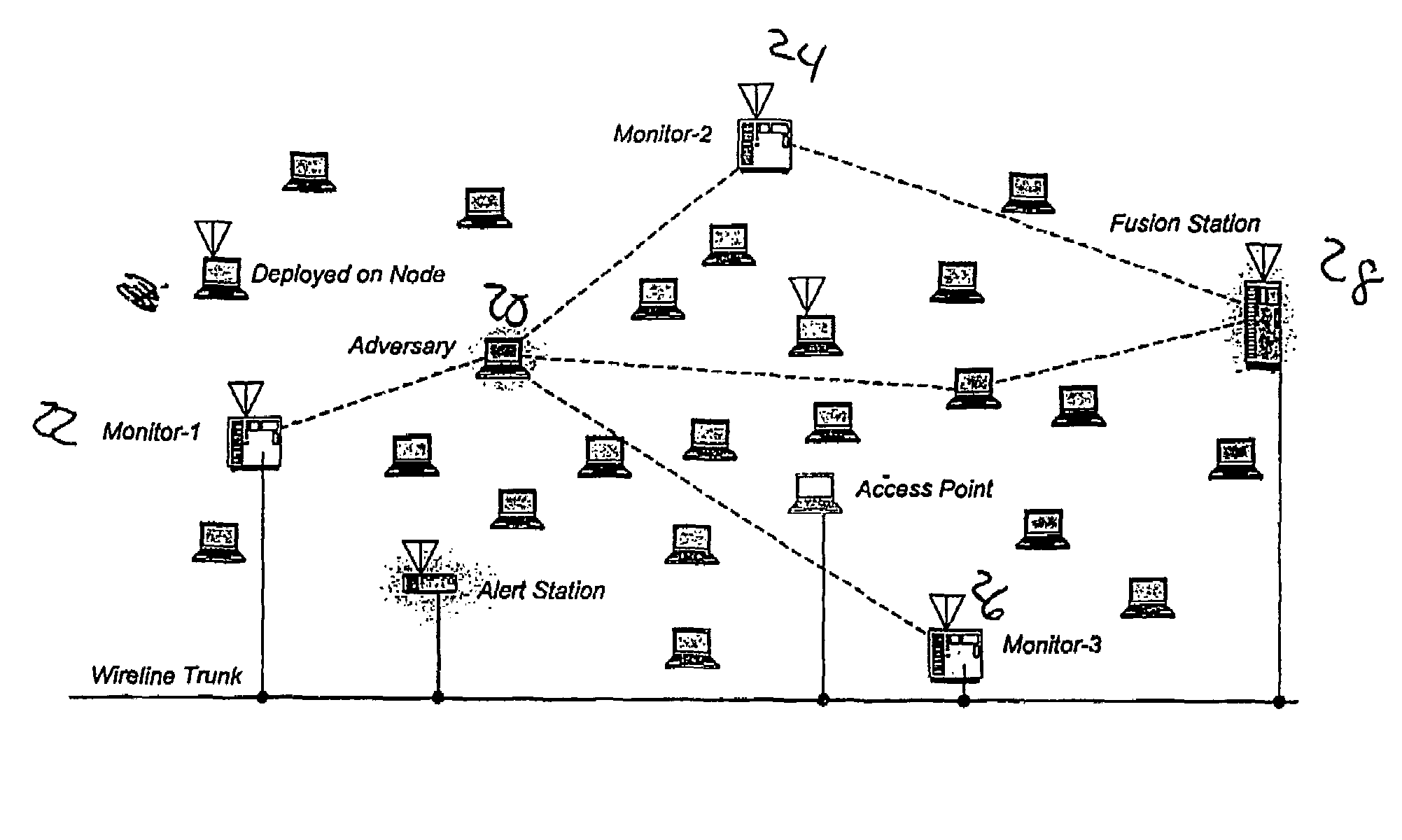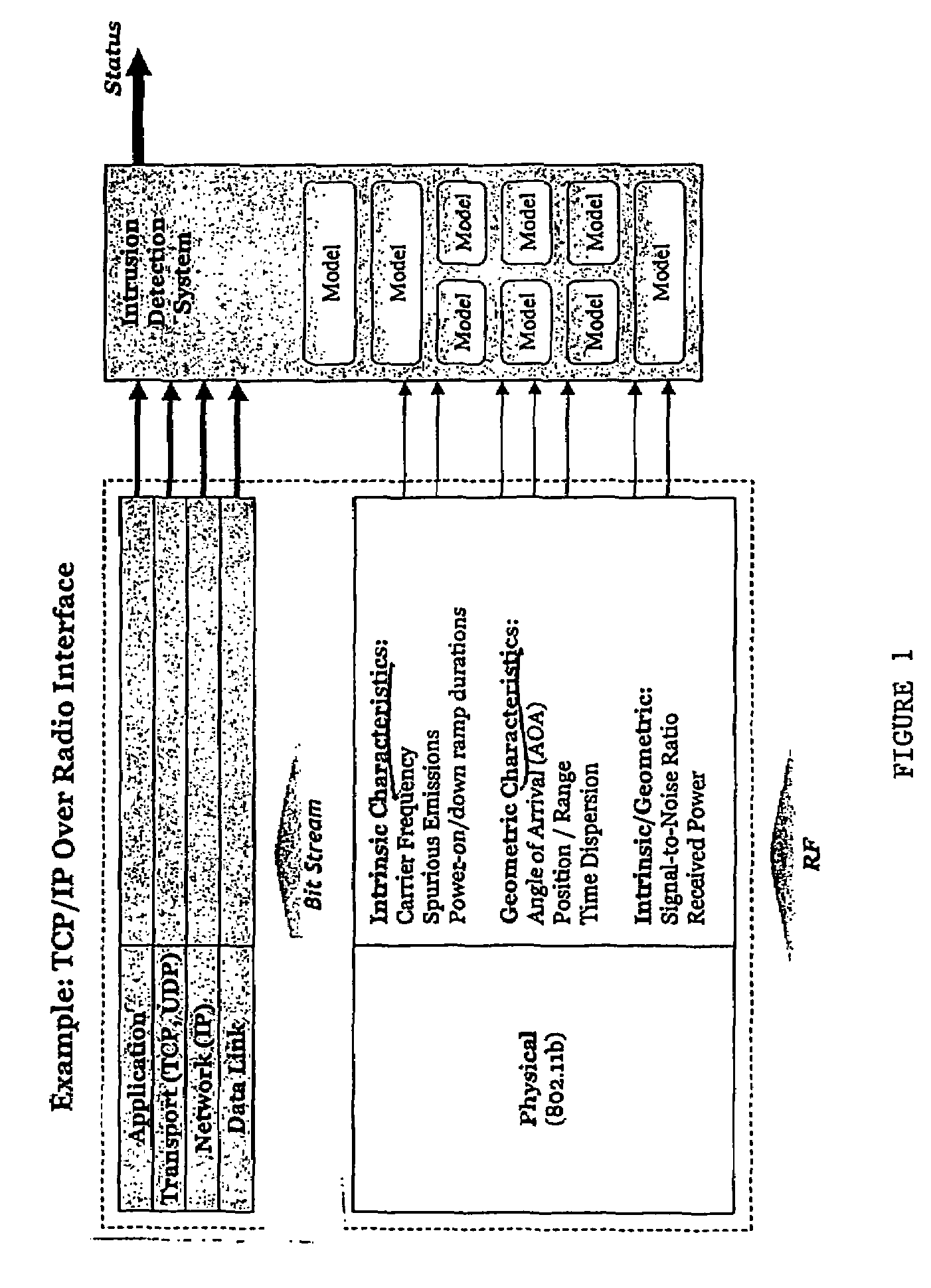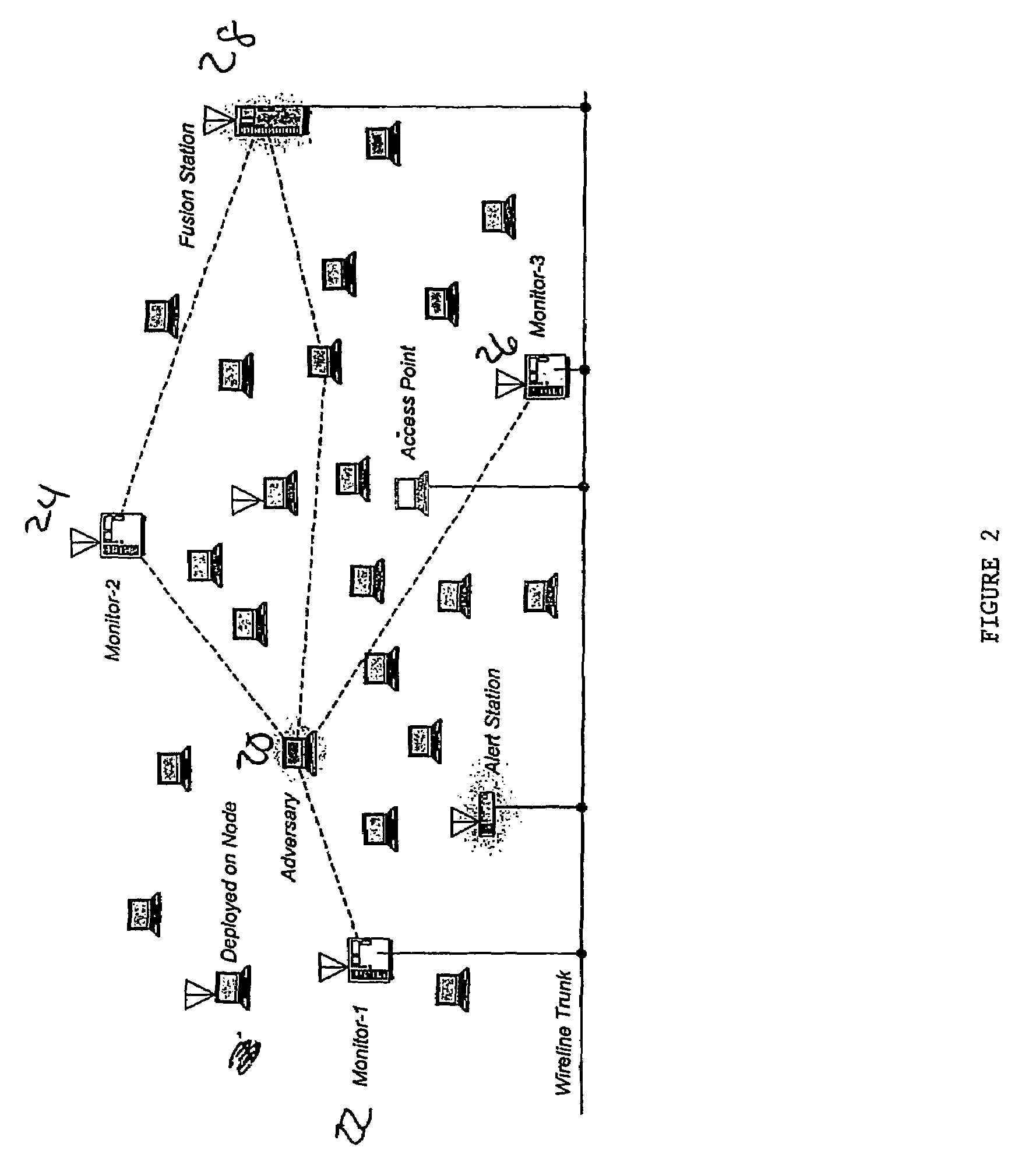Intrusion detection system for wireless networks
a detection system and wireless network technology, applied in memory systems, digital computer details, computer security arrangements, etc., can solve the problems of insufficient robustness of higher level techniques such as these, and the inability of networks to enjoy the same physical security, etc., to achieve a new level of robustness against intrusion
- Summary
- Abstract
- Description
- Claims
- Application Information
AI Technical Summary
Benefits of technology
Problems solved by technology
Method used
Image
Examples
Embodiment Construction
[0019]FIG. 1 is a graphical depiction of the layers of a network architecture, and their relationships to an intrusion detection system utilizing physical layer information. The specific example here is of a TCP / IP over radio interface.
[0020]Five potential architecture layers are shown in FIG. 1. From top to bottom they can be categorized as the application, transport, network, datalink and physical layers. The focus of the present invention is on the physical layer, and the graphics depicts the analog RF signal entering the physical layer, prior to A / D conversion. The most complete intrusion detection system would gather evidence by utilizing all five of the architecture layers. Information from the various layers is fed into models and a decision is made as to the status of an intrusion.
[0021]The present invention is useful in a variety of applications, where datagram and spoofing techniques are a concern. The technique may employ one or more monitoring stations which are distribu...
PUM
 Login to View More
Login to View More Abstract
Description
Claims
Application Information
 Login to View More
Login to View More - R&D
- Intellectual Property
- Life Sciences
- Materials
- Tech Scout
- Unparalleled Data Quality
- Higher Quality Content
- 60% Fewer Hallucinations
Browse by: Latest US Patents, China's latest patents, Technical Efficacy Thesaurus, Application Domain, Technology Topic, Popular Technical Reports.
© 2025 PatSnap. All rights reserved.Legal|Privacy policy|Modern Slavery Act Transparency Statement|Sitemap|About US| Contact US: help@patsnap.com



